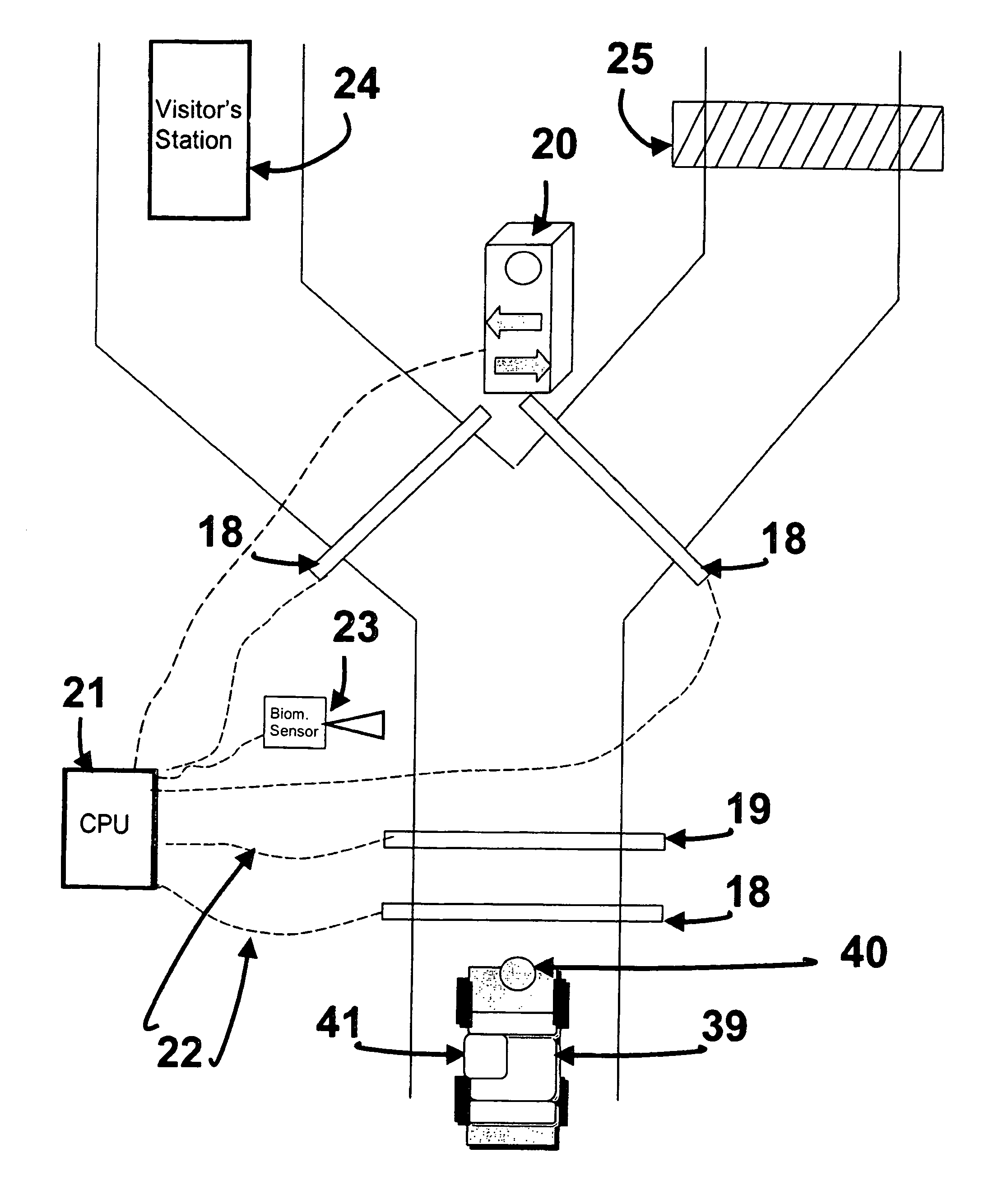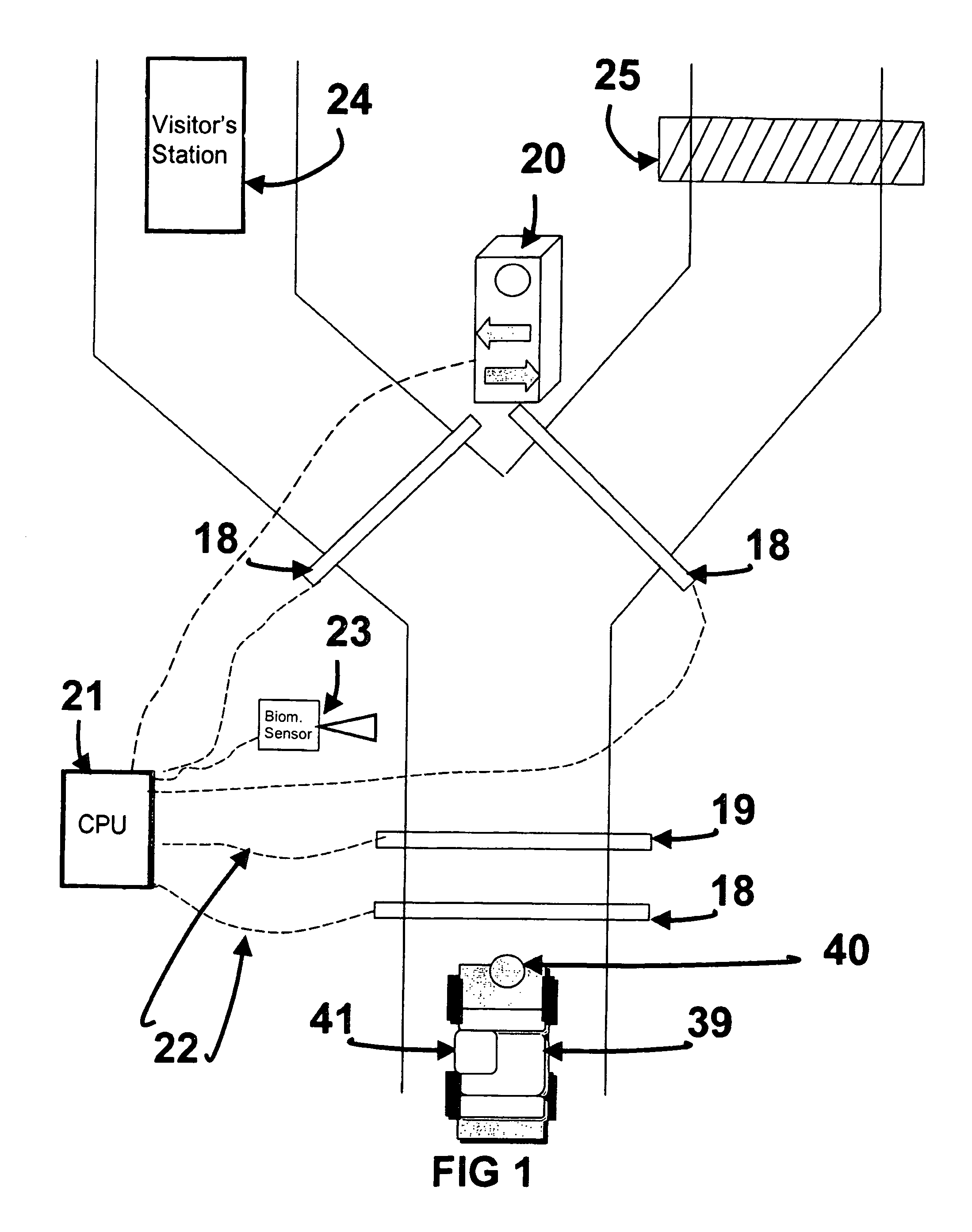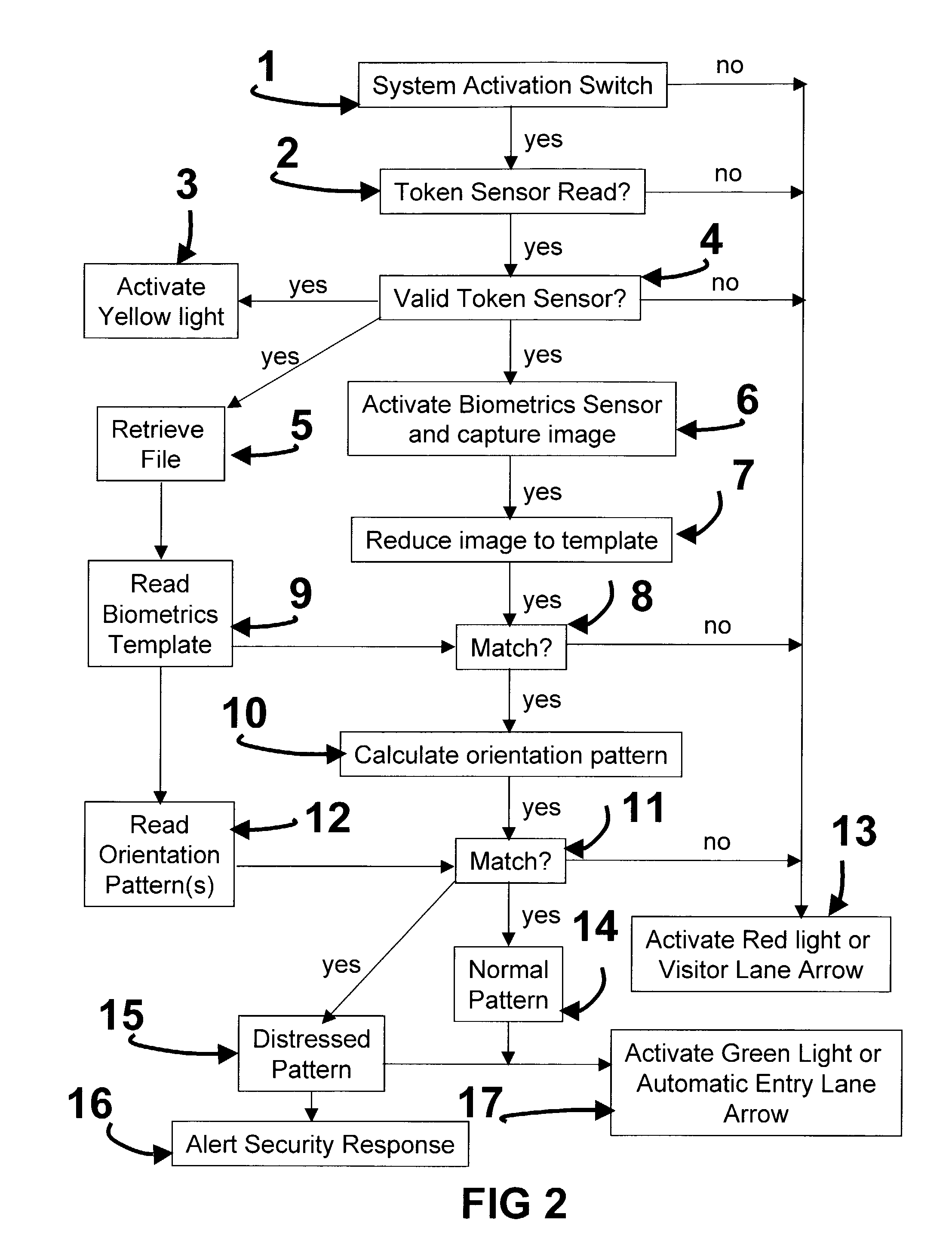Personnel and vehicle identification system using three factors of authentication
a technology of personnel and vehicle identification and authentication factor, which is applied in the direction of testing/monitoring control systems, program control, instruments, etc., can solve the problems of face recognition system failing against a photograph, fingerprints can be copied, and each type of identification authentication system has its own set of inherent weaknesses, so as to reduce the cost of the system and increase the accuracy
- Summary
- Abstract
- Description
- Claims
- Application Information
AI Technical Summary
Benefits of technology
Problems solved by technology
Method used
Image
Examples
embodiment
Preferred Embodiment
[0070]FIG. 1 shows the Personnel And Vehicle Identification System Using Three Factors of Authentication (PAVIS-3) invention components. The vehicle enters the gate area and the vehicle contains a contactless token such as a Radio Frequency Identification Device (RFID), bar code or proximity tag, and a vehicle operator who has been enrolled in the system and associated with the vehicle and token sensor. The vehicle drives up to the activation sensor 18 activating the system and alerts the token sensor 19 to sense for a token. The token sensor 19 senses the token 40 and reads the unique number contactlessly transmitted to the sensor 19. The token number is transmitted by a communications device or cable 22 to the central computer unit 21 to determine if it is valid, and if so, to pull up the related file. If the token 40 is valid, the valid token light is illuminated on the traffic signal 20 to inform the operator 41 of the match and to direct the operator to pres...
PUM
 Login to View More
Login to View More Abstract
Description
Claims
Application Information
 Login to View More
Login to View More - R&D
- Intellectual Property
- Life Sciences
- Materials
- Tech Scout
- Unparalleled Data Quality
- Higher Quality Content
- 60% Fewer Hallucinations
Browse by: Latest US Patents, China's latest patents, Technical Efficacy Thesaurus, Application Domain, Technology Topic, Popular Technical Reports.
© 2025 PatSnap. All rights reserved.Legal|Privacy policy|Modern Slavery Act Transparency Statement|Sitemap|About US| Contact US: help@patsnap.com



